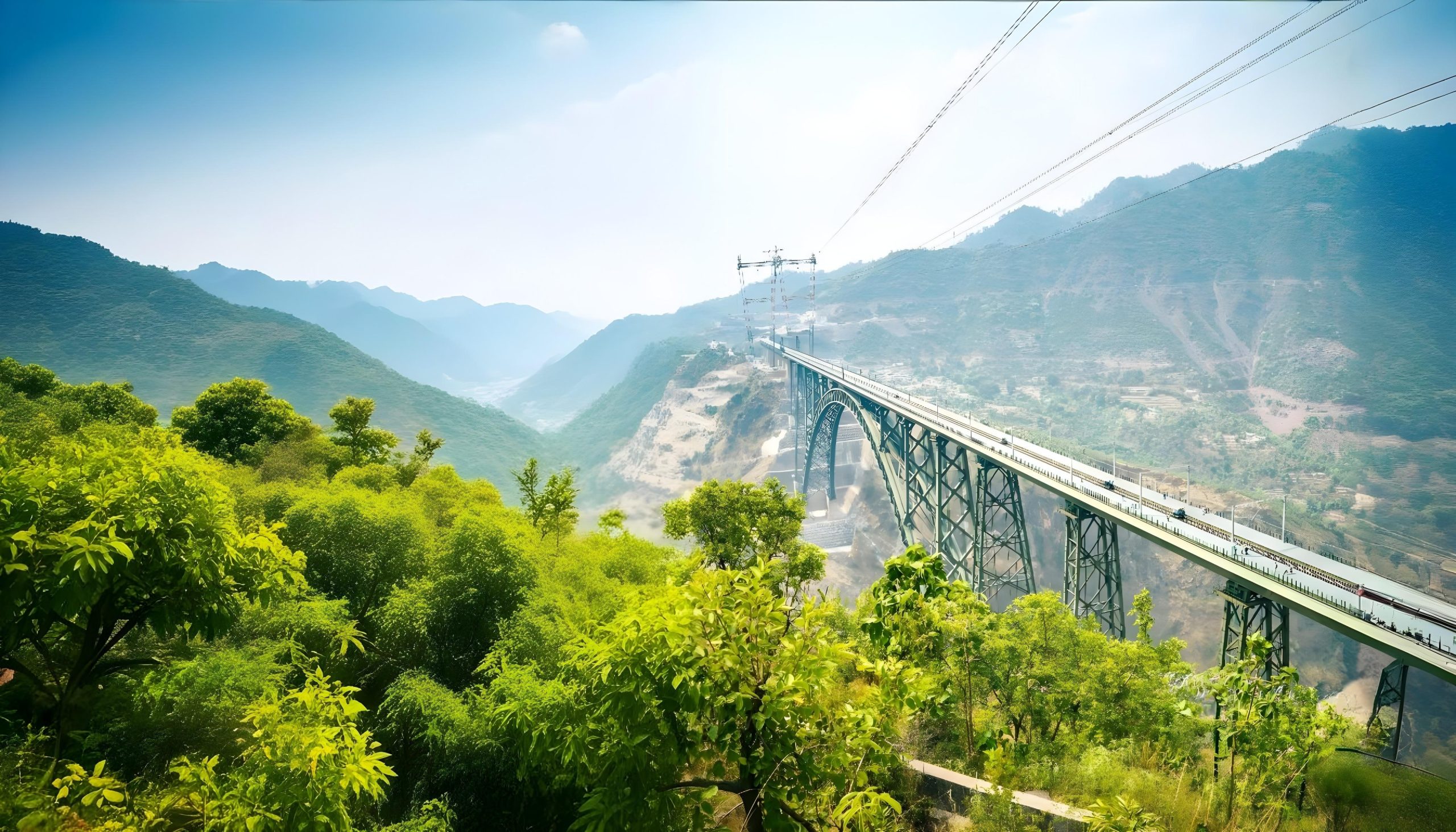Projekt połączenia kolejowego Udhampur– Srinagar– Baramulla (USBRL), zainaugurowany 6 czerwca 2025 r. przez premiera Indii Narendrę Modiego, stanowi ważny kamień milowy w integracji stanu Dżammu i Kaszmir z resztą Indii.
Firma ArcelorMittal Rail & Special Sections jest dumna z brania udziału w jednym z najbardziej ambitnych i wymagających technicznie projektów infrastrukturalnych w Indiach, poprzez zapewnienie dostaw szyn z hartowaną główką produkowanych w Gijón (Hiszpania) na odcinek Katra – Dharam.
Emblematyczny i najbardziej wymagający technicznie projekt infrastruktury kolejowej w Indiach
USBRL to 272-kilometrowa linia kolejowa zlokalizowana w stanie Dżammu i Kaszmir w północnych Indiach, w pobliżu Himalajów, której zadaniem jest połączenie Kotliny Kaszmirskiej z równinami Indii i poprawa łączności, mobilności oraz integracji między regionami.
Ta kultowa linia kolejowa jest nie tylko cudem nowoczesnej inżynierii; jest to krytyczny węzeł łączący Kotlinę Kaszmirską z resztą Indii.
Budowa linii kolejowej w otoczeniu głębokich kanionów, stromych zboczy i na terenie o wysokiej aktywności sejsmicznej wymagała nie tylko wizji i determinacji, ale także najwyższej jakości materiałów i precyzyjnej inżynierii, szczególnie w przypadku mostu kolejowego na rzece Chenab, najwyższego na świecie, oraz mostu Anji Khad, pierwszego w Indiach wantowego (podwieszanego) mostu kolejowego.

Chenab bridge, India.
Podejmowanie wyzwań związanych z dużymi wysokościami z wykorzystaniem szyn o dużej wytrzymałości
Otoczenie odcinka Katra – Dharam wymaga materiałów, które są w stanie sprostać ekstremalnym wahaniom temperatury, naprężeniom mechanicznym i dużym obciążeniom osi. Nasza szyna z hartowaną główką zwiększa trwałość i odporność na zużycie wymagane w takich warunkach, zapewniając dłuższą żywotność i zmniejszając wymagania w zakresie konserwacji.
Firma ArcelorMittal dostarczyła na odcinek Katra – Dharam szyny z hartowaną główką 60E1, znane z wysokiej trwałości i odporności na zużycie, właściwości krytycznych w przypadku wymagających warunków panujących w tym regionie.


